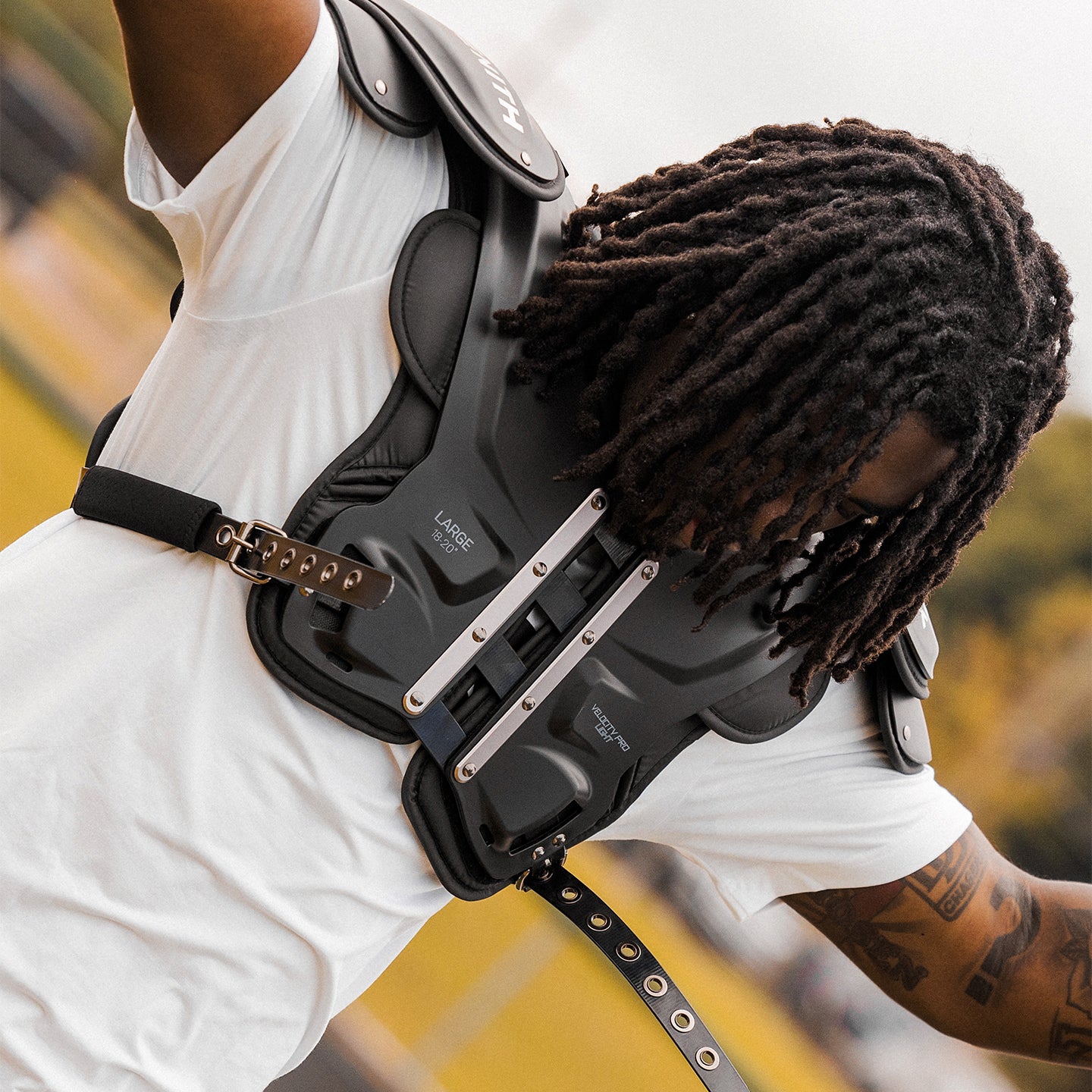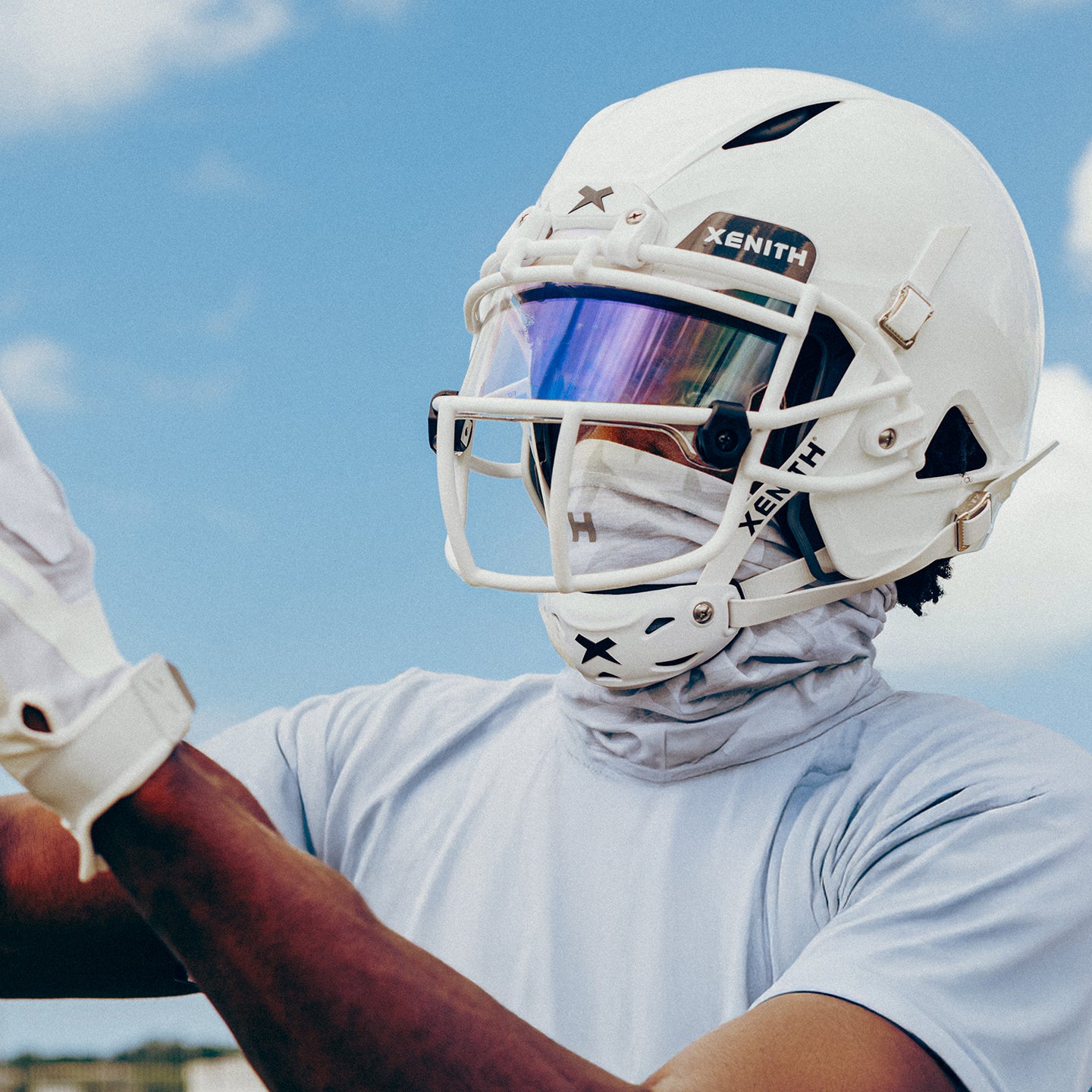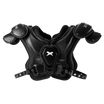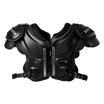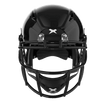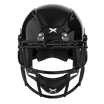Tackle Football Safety Briefing
Anytime an athlete takes the field, safety is a top concern. This Xenith Safety Briefing is aimed at helping players and parents learn more about Xenith football helmet technology, the right age to start tackle football, how to play the game safely, as well as concussions and how to identify them.
How Football Helmets Work
Football helmets are built with a hard exterior shell that covers an assortment of protective material and padding to protect player's heads. Most standard football helmets use either polycarbonate or ABS plastic for their exterior shells - the Xenith Shadow, Shadow XR, and Orbit Pro helmets utilize an advanced nylon polymer material for its lightweight, yet durable properties, and advantages in impact dispersion.
Football helmets also have interior padding and other flexible material within the helmet that helps mitigate impact forces before they reach the head, and help to provide a more comfortable fit. Xenith helmets also feature an Adaptive Fit System and a decoupled shock liner, which allows the shell and shock absorbers to move independently, reducing both linear and rotational forces.
The Adaptive Fit System is what separates Xenith helmets from all other football helmets worn on the field. While other football helmets on the market use air bladders, or require 3D scanning to achieve a secure fit, the Xenith Adaptive Fit System conforms to player's heads by pulling the chinstraps through channels located within the helmet. This advanced design delivers a superior custom fit every time a player pulls on their helmet, keeping them protected during every game and practice.
Watch this video to take a closer look at Xenith innovation, and see how our 5 Star rated helmets work to deliver a more secure, custom fit.
For more information on helmet safety: CDC - Get a Heads Up on Football Helmet Safety
Football Helmets Cannot Prevent Concussion
The U.S. Centers for Disease Control (CDC) advises that “there is no concussion-proof helmet." Concussion happens when the brain moves rapidly within the skull, causing chemical changes in the brain and possible damage to brain tissue. Helmets cannot prevent the brain from moving within the skull during severe head acceleration or deceleration. In football, this can occur when there is a head impact or a body impact (without head contact) that causes the head to move, such as during a tackle or block.
Football Helmets Cannot Prevent CTE or Other Neurodegenerative Diseases
According to the U.S. Centers for Disease Control, repeated head impacts (even those that do not cause concussion symptoms, known as sub-concussive impacts) may lead to the brain disease Chronic Traumatic Encephalopathy (CTE). CTE is a neurodegenerative disease involving irreversible damage to neurons in the brain that leads to problems with movement and/or mental functioning.
Symptoms of CTE typically do not appear until years after exposure to repeated impacts. Symptoms usually get worse over time, even without additional head impacts. Scientists are actively studying the relationship between head impacts and the risk of developing CTE or other neurodegenerative diseases such as Alzheimer’s and Parkinson’s. Current research is investigating a variety of factors that are believed to be related to the risk of developing CTE, such as: age of first exposure to repeated head impacts, total years of exposure to repeated head impacts, and severity of head impacts.
Learn more: Concussion Legacy Foundation - What is CTE?
What Age to Start Tackle Football
Many leagues introduce tackle football for players as young as 5 years old, but some organizations recommend measures to avoid head impacts until later ages. The brain is undergoing critical developmental processes during childhood and adolescence that may be compromised by repeated head impacts. Also, young athletes tend to have weaker necks and torsos, which may make them more susceptible to injury. However, other experts advocate that learning to tackle properly while young, when players’ body weights and the forces of impact are generally less, is preferable for preventing injury when players are older.
The American Academy of Pediatrics doesn’t specify what age is appropriate to start tackle football, but indicates that “Delaying the age at which tackling is introduced to the game would likely decrease the risk of these injuries.” A recent report released by the Aspen Institute argues that flag football should be standard until age 14, and that fundamental tackling, blocking and hitting skills could be introduced in practice at age 12.
The Concussion Legacy Foundation states that it “strongly recommends you delay enrolling your child in tackle football until the age of 14.” However, many other organizations have not established a recommendation regarding the age for starting tackle football, such as the: American Academy of Neurology, American Medical Association, National Alliance for Youth Sports, U.S. Centers for Disease Control, and USA Football.
Ultimately, this decision remains up to parents and players.
Football Leagues With Less Contact
For parents and players concerned about tackling, it’s helpful to know there are other versions of football that have rules to limit contact. They are available for a variety of age groups. Some even use helmets and pads. Leagues may limit contact using rules such as: removing flags or two-hand-touch instead of tackling, eliminating 3-point stances, limiting blocking, limiting special teams or rushing plays, reducing number of players, mandating or limiting protective gear.Remember, every sport presents its own risks of injury that athletes should consider before playing. Most contact sports carry a risk of head impacts. Read the league description or rulebook to understand the contact rules being used.
Use Helmet Properly
Keep your head in an upright position and do not use the helmet to make contact with any player. This is a violation of football rules and can result in severe head and neck injuries. According to the NFL's Way To Play, proper tackling technique is knees bent, pads down, and head up.
Follow League Rules and Coach’s Instructions
Regardless of age and level, responsible league and coaches should teach proper techniques and enforce up-to-date safety rules and policies. Training and certification is a good way to reduce the chances of head impacts and other injuries on the field. Make sure your coach is certified by USA Football for the age and contact level of your team.
Leagues, schools, and coaches can help reduce the risk of head injuries in many ways, including: implementing medical protocols, educating players/coaches about concussions, removing players from play, properly evaluating and treating players, provide qualified athletic trainers or physicians at practices and games, and perform pre-season medical screenings.
To learn more, including questions parents can ask their child’s coach to address safety concerns, check out the following links: USA Football’s Questions to Ask Your Child’s Coach, Children’s National Health System’s 10 Questions to Ask Your Child’s Coach About Head Safety, USA Football - Certification Options
Recognize and Respond to Concussion Symptoms
During a football game or practice, players may experience impacts that cause concussion symptoms, so it is crucial coaches know what to look for so the player can be treated properly. Contrary to popular opinion, most athletes with a concussion don't always lose consciousness. Additionally, symptoms may be more difficult to detect in younger athletes.
Learn to recognize concussions, and do not play if concussion is suspected. Report suspected concussions immediately - not reporting a concussion right away can significantly lengthen the time it takes for the player to recover. The player must be evaluated by qualified medical personnel (athletic trainer, doctor, etc.) who will decide if it’s okay to keep playing or not. Only medical personnel should make this decision, not the player, coach, or parent.
Concussion Signs
While playing or watching football, be on the lookout for concussion signs in yourself and others, such as: being dazed or stunned, feeling confused about assignments or positions, forgetting plays, unsure of game, score or opponent, losing consciousness (even briefly), showing behavior or personality changes, forgetting events prior to or after the hit/fall.
Concussion Symptoms
Symptoms of concussion can show up several minutes, to hours after a hit. If an athlete shows any of these symptoms, they must be evaluated immediately by a medical professional before doing any activity: headache or pressure in the head, nausea or vomiting, balance problems or dizziness, double or blurry vision, sensitivity to light or noise, concentration or memory problems, feeling sluggish, hazy, foggy or groggy, or trouble sleeping.
Physical and mental rest is important immediately following a concussion. Suffering another impact before a concussion fully heals can cause more damage or even result in death, known as Second Impact Syndrome. Consult a medical professional for guidelines to return safely to athletics and schoolwork. Normal recovery, especially in young athletes, can take a month or longer. When treated properly, nearly all concussions resolve without any long-term issues.
Learn more: CDC - Facts About Concussion and Brain Injury, CDC - Heads Up Online Training Courses, Concussion Legacy Foundation – Concussion Resources.
Ready to Play?
Thank you for taking time to think about safety. We hope each player and parent considers what is best for them and continues to discuss safety concerns with coaches, leagues, and their community.

